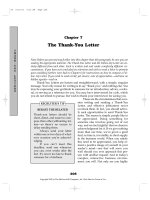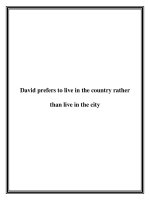The golden book picture atlas of the world book 1 north america
Bạn đang xem bản rút gọn của tài liệu. Xem và tải ngay bản đầy đủ của tài liệu tại đây (15.61 MB, 104 trang )
NORTH
AMERICA
THE
GOLDEN BOOK
THE COMPLETE STORY OF THE CONTINENT
:
GEOGRAPHY AND RESOURCES
INDUSTRY AND AGRICULTURE
j
WITH MANY MAPS, FACTS AND FIGURES
I
PEOPLE AND PLACES
•
•
OF THE
•
WORLD
Book
*>>^
^?m'
1
•
Editor in Chief
•
Phillip Bacon
Professor of Qeography
Jcachers College, Columbia llnirersity
Managing Editor
Associate Editor
Picture Editor
Staff
•
•
•
•
Joanna AldlndorffPeter
Robert
R.
J.
Picture Researcher
Limblirg
Cartographer
Garlock
Designer
•
.
•
Peter
J.
Gallagher
Vincent Kotschar
Frances Giannoni
Judy Korman, Barbara Vinson, Kathleen Seagraves, Johanna Greenwald
Maps
Special Section of Statistical
Covers
Maps on
pages
•
Richard Edes Harrison
•
Ray Pioch
99, 194-5, 292-3, 294-5, 387, 484-5,
3,
532, 533 are copyrighted by Georg
Westermann
Verlag.
They are produced from the Westermann Bildkarien
£ex(C0H by arrangement with Georg Westermann Verlag.
Complete
These books
of the world.
daily
rivers,
life
the exciting story of
You
You
industry.
and
tell
List oj
will see
will learn
how men
how
1
BOOK
2
live in all parts
about mountains and deserts, oceans
of people in other countries
BOOK
people
use the land for farming and
and towns— and you
cities
Books
will
discover
.
NORTH AMERICA
.
SOUTH AMERICA
BOOK
3
BOOK
BOOK
5
.
EUROPE
4
.
.
how
ASIA
AFRICA
BOOK 6 AUSTRALIA, OCEANIA
AND THE POLAR LANDS
.
with
the
compares with your own.
a special section of
statistical maps and index
BOOK
1
NORTH
AMERICA
BY PHILLIP
BACON
Professor oj Qcograpby,
Jeachers College, Columbia University
THE GOLDEN BOOK
PICTURE ATLAS
OF THE
IN SIX
Illustrated with
WORLD
VOLUMES
'More than i,ooo Color Photographs and !Maps
GOLDEN
©
COPYRIGHT 1960 BY GOLDEN PRESS,
PRESS
INC. DESIGNED
•
NEW YORK
AND PRODUCED BY ARTISTS AND WRITERS
BY WESTERN PRINTING AND LITHOGRAPHING COMPANY. PUBLISHED BY GOLDEN PRESS,
INC.,
PRESS, INC. PRINTED IN
THE
ROCKEFELLER CENTER, NEW YORK
U.S.A.
30, N. Y.
NORTH AMERICA
Courtesy of
Surf from the Atlantic
THIS
IS
Ocean washes Maine's rock-rimmed
TWA-Trans World
Airlines
coast.
NORTH AMERICA
North America is a huge continent. Only
Asia and Africa arc larger. And only two
other continents have more people. These
two continents are Asia and Europe. Today
more than 250 million people share the
land of North America.
Even though North America is smaller
in size and population than some other
continents, its people have made great
progress. This seems especially true when
you learn that fewer than nine out of every
100 persons in the world live in North
America. North America is still a young
But even after so many years, the Indians
were still few in number.
With the coming of Europeans, North
America's population began to grow rapidly. In time, people from every part of the
world came to North America. They came
continent insofar as people are concerned.
waters of the Caribbean Sea, almost every
North America's
were the
ancestors of the Indians. They came from
first
settlers
Asia, across the Bering Strait,
many
thou-
sands of years ago. By the time the first
men sailed westward from Europe
and discovered North America, Indian
peoples had spread across the continent.
white
to find
in this
new homes and new
"New World."
opportunities
As the people from the Old World occupied North America, they tried to find those
places best suited to their ways of life.
Many choices lay open to them. From the
islands of the Arctic Ocean to the tropical
kind of climate and landform could be
in North America.
found
The newcomers landed on a variety of
coasts, from sandy plains to rocky cliffs.
hills and fertile
Beyond the hOls rose mountains,
some old and worn-down, with forests cov-
Inland they found rolling
valleys.
1
Ci
w
.>
\
^
^tmio.
fiazsR^i
'''onionj
X -:*C^,&tk
f^ T
Hills
NORTH AMERICA
B
NORTH
AMERICA
NATURAL
VEGETATION
-
rr.
Vv\
^^
In Louisiana, coastal swamplands are called bayous. This
trees,
bayou
is
filled
with moss-covered cypress
an important source of timber.
Richard Magruder-FPG
Here
is
the California coast. For
more than 1,000
Ocean crash
miles the waters of the blue Pacific
on California's shoreline.
Courtesy of
TWA-Trans World
Airlines
6
s.
m
s.
NORTH AMERICA
-'HT
,'
fruit trees, vegetables,
and
livestock.
Span-
and
citrus
iards brought their grapevines
Even plants native
trees.
to the
Far East
did well in North America. Fine crops of
rice
were planted
places.
many
in
low-lying,
And sugar cane made
a planter in Louisiana
swampy
fortunes for
and the Carib-
bean islands.
As settlers pushed farther and farther
west in Canada and the United States they
left the forested lands behind them and
entered the drier grasslands of the Great
Plains. Here was a wonderful grazing land.
Herds of long-horned cattle gradually re-
placed the buffalo, the "cattle" of the Plains
Indians. Spanish settlers also opened great
CourU'sy
ranches in the drier regions of Mexico.
The Indians' food plants made a very
Year-round
duce dense
of the
warm weather and
forests like this
Conitnonwealtli of PLierlo Rico
plenty of rain pro-
one
in
Puerto Rico.
important contribution toward helping the
white man settle North America. Although
many
white
men came
to
North America
seeking riches in gold and furs, the Indian
Sandy beaches, palm
trees,
and a warm winter sun
attract thousands of tourists to Florida.
food plants they discovered soon proved
loi the Florida State
r
more valuable than these. From the Indians the newcomers got many plants
which are still important to every one of us.
The most important Indian food plant
was corn. But the Indian also gave the
white man white and sweet potatoes, tomatoes,
squash, several kinds of beans,
pump-
and many other foods. Without these,
early settler would have starved.
Soon they became important in many other
parts of the world as well. Another important Indian plant was tobacco.
kins,
many an
Northern North America
is
covered by thousands of square miles of marshy Arctic tundra.
Rultierford Plait
'
C^Sih,
•
.'CdD-
^^
Hebron
hes
New
York
Mexico City
@»59
Guatemala City
CLIMATE
January
and
The United
If
are places that are
warm
the year around,
and there are places covered with ice and
snow where summer never comes. There
ai'e vast areas of parched desert land, and
there are also wet places where more than
loo inches of rain fall each year.
The two temperature maps show you
that the southern portions of North America are
warmest.
It is
warm
in January as
Guatemala City
Mexico City
And the
north is much
climate
July.
places far to the
you look carefully at the maps on
these two pages they will show you that
North America has many climates. There
inches
inches
inches
of
colder.
States occupies a large area
North AmeriWinters in the northern
portion of the country are long and cold.
in the central portion of the
can continent.
In the South, winters are
much
shorter.
Average temperatures in January are mild.
Because the northern part of the country
has such long winters, the growing season
is
quite short.
In the South the growing season
longer. In
months
fact, in
in length.
some
states
And even
is
much
nine
farther south,
Mexico and Central America,
well as July. This should not surprise you.
in parts of
These places are closest to the equator. The
farther north you go, the greater are the
differences between the temperatures of
month. The growing season
average
is
it
temperatures
The climate
of places
are
is
high
every
lasts all year.
affected by other
JULY
JANUARY
Average Temperature
Average Temperature
in
k
ASIA
ASIA
Degrees Fahrenheit
in
Degrees Fahrenheit
Under 32
CoPtrifl" I960 ft
Under 32
32-60
32-60
50-72
60-72
Over 72
Over 72
Mip ProlHi
<i>
Cop»fieni
iwo
lOOnF
lOOnF
lOOnF"
lOOnF
100
50-
IOOqF
uF
50
50
I
h
•J
Astoria
Salt
Lake City
Salt
lOOnF"
lOOpF"
Hebron
Lake City
lOOpF"
lOOnF'
Miami
Guatemala City
50
o
New York
Mexico City
Guatemala City
New
York
Mexico City
things besides distance from the equator.
Look
exammountainous land
stretches along the western edge of North
America, from Alaska south to Panama.
Some of these mountains are so high that
snow can be seen on their peaks even in
summer. Summer days are often bright
and warm in the mountains, but the nights
are cold. The growing season is far shorter
see that parts of the Pacific coast are very
Landforms
ple,
a
also affect cUmate. For
great
belt
of
than in the lowlands.
Oceans
also
affect
climate.
Compare
temperatures along the coasts with those
deep in the interior of the continent. Winters are colder in the interior than along the
coasts,
and summers are warmer.
Rainfall
is
just
as important as
wet.
at the rainfall
maps.
The high mountains
responsible for
all
It
is
plain to
of this region are
this rain.
They catch
from
the moisture-laden air that blows in
the Pacific Ocean.
To
is
the east, beyond the mountains, there
a vast dry region. This dry land extends
from Canada
to
Mexico.
It is
far
from any
ocean. It has little opportunity to capture
moisture from the air. But still farther east,
in the southeastern United States, you can
find another wet region. Here warm, moist
blows inland from the Atlantic Ocean
and the Gulf of Mexico. This air brings
air
plenty of rain to the southeastern states.
tem-
perature in describing the climate of places.
The northern
also receive
states east of the Mississippi
ample moisture.
10
NORTH AMERICA
PEOPLE OF NORTH AMERICA
These are the people of North America.
Two hundred and
fifty
million strong, they
have spread themselves across the continent. Eskimo, Indian, cowboy, statesman,
factory worker, great planter, small farmer,
doctor,
fisherman,
teacher,
shopkeeper,
—
all have found homes
North America.
People have been coming to this continent for thousands of years. A few came
before the beginning of written history,
but most have come in the last 400 years.
And some are stepping off boats and airplanes this very day to begin a new life in
the New World.
miner, and sailor
in
The
in
®
CwrrifM :mo br
Mw
white
men
to
make
their
homes
the time they crossed the Atlantic Ocean
from Europe, about five million Indians
occupied North America.
Premu Ik
Manhattan Island,
first
North America came from Spain. At
in
New
part of the world have
York City,
come here
is
North America's most densely populated area. People from every
Four and a half million are of foreign origin.
to live.
Van Bucher-Photo Researchers
mi
nai
NORTH AMERICA
^^
Royal
11
^
Lowy— American
Indian Archives
These Sioux Indians represent the 350,000 Indians that live in the United States today. Many more Indians
live in Canada, Mexico, Central America, and the Caribbean, as well as in South America.
The
in the
great majority of the Indians lived
Each country paid
more
claims of the others.
fertile
regions of present-day
Mexico and Central America. In fact, little
more than one million of North America's
Indians lived on the land that became Canada and the United States.
Spanish explorers tramped over a vast
portion of North America. But in much of
the land they explored, the Spaniards failed
to find the treasures of gold
and
silver they
were seeking. They soon turned their attention to Mexico, Central America, and
the Caribbean islands.
Meanwhile, settlers from northwestern
Europe began moving to North America.
They built their homes in the portions of
North America now occupied by Canada
and the United States.
Frenchmen were Canada's first settlers.
French settlers occupied the St. Lawrence
Valley. They also built outposts on the
Great Lakes. Eventually they claimed
all
the land drained by the Mississippi River.
from England arrived in North
America after the French began their occupation of Canada. At first the English
settled only on the east coast. People from
Finland, Sweden, and the Netherlands also
built settlements on the east coast.
Settlers
For
many
struggled
to
years
gain
little
attention to the
European
possession
countries
of
North
America. Englishmen took over the Finnish, Swedish, and Dutch settlements.
England fought with France and Spain.
Less than one seventh of the people of the United
States live
on farms.
usda
Fritz
Fred and Sara Machetanz
Eskimos are North America's northernmost people.
They live by fishing and hunting.
When
the United States freed itself from
England, the struggle for control of the
Over nine tenths
The
official
Henle- Photo
Re-j.Mi
1.
1...
[
of Haiti's people are Negroes.
language of Haiti
is
French.
land changed hands by treaty or by purchase rather than by war. The United
States thus obtained a vast area west of
Florida from Spain in 181 9, and Alaska
from Russia in 1867.
\n the Caribbean islands, and in the land
that was to become the southern states of
the United States, large areas had to be
cleared for farms. Few workers were avail-
the Mississippi River from France in 1803,
able.
continent
continued.
Fortunately,
much
At
first
the white
men
tried to force
Indians to clear the forests and cultivate
Over 650 people per square mile crowd Puerto
more than half of the people are farmers.
Rico. Yet
Courtesy of the Puerto Rico News Service
the crops. But Indians proved to be poor
plantation workers.
To
solve this labor problem, great
num-
bers of Negroes were brought to North
America from Africa. Today Negroes make
up a large share of the population of many
Caribbean islands. In the United States
about one tenth of the population is Negro.
In Central America many Negroes occupy
coastal areas where they work on banana
plantations. But in Mexico and Canada the
number of Negroes is quite small.
Who are the people of North America?
No place on earth has a more varied population. North America's people have come
from every continent on earth except Antarctica, which had no people to send. Thousands crossed the ocean from all of the
countries of Europe. Africa sent the an-
And
make new
cestors of North America's Negroes.
Asia,
too,
sent
its
people to
homes on the North American continent.
The people of North America are spread
unevenly over the continent. Some parts of
North America are almost empty of people.
—
Other parts are only thinly settled tiny
communities are separated by miles and
miles of empty land. And still other places
in North America seem jammed with
people.
Why
some places crowded and other
places empty? For the most part, the
people of North America have concentraare
ted in those places best suited to support
human
They have gathered where the
climate is desirable, or where the soil is
most fertile, or where the mineral relife.
Jane Latta
sources are richest.
Four -fifths of Mexicos people are at least part
Indian. Over one-fourth are pure Indian.
You are probably interested in rockets
and space travel. Many people are. But all
of us need to remember that man has been
man has
earthbound for thousands of years. And
we need to remember, too, that man still
gets
all
of his food, his clothing,
Guatemala has Central America's
and
his
shelter
to
from the
earth.
To
provide them. This book will help you
see the kinds of places
in
largest population.
get these things
sought out those places best suited
man
has selected
North America.
Many
are descendants of the ancient Mayans.
Courtesy of the Pan American Coffee Bureau
NORTH AMERICA
14
"^
O
^.
^^.
%1.
V4->
'O
,V.Q'
*•.
f\^
atf'-'
.D
*^
"<s>
^7-^
^•^/;
x-%
^*^'
.$^'*
"^.;
'**^
~T---_
*
^Pi^e
:
ALBERTA -^
'
r%.
HUDSON
MANITOBA
/A
N
"5.
-!)'
/
i?.C
Q^)^*'
Lake
^^^>A
ONTARIO
;-"*^t.
fj^.'i^
_,__\_
^«"'oro
NORTH
DAKOTA
,
MONTANA
V*:
I
>
\
'^
i^
\
-!
-^Q^.
oreg!0«
'(?
r-
Oc.
^.
I
;
1
idabo
;'
;
-
(
°»
\
SOUTH
DAKOTA
•-,
f
'
}y.r.
if ,^^
( ^i
\ 7^
1
NEBRASKA
IOWA
\
0^0
Tu,a',
,,;
!<:
^
.=,-'
,t\c
*
^ M«k>»""\
',
sO»-L
'»*T
L,l
WYOMING
-1
,
Wise./
\
^d.
'^A/
{?
S
'
;'
,'
^tt.^^
-^itfj^tv
,'
HHJ
a'^''
COLORADO
i
ARIZONA
NORTH
AMERICA
NEW
KANSAS
X-.J^^cf-''
\
/- ]r
|OKLAHOMA\
;
V—
MEXICO
-i«ws.i
\
(?>,
-"^J,
<&.
\
%
t^,.
-<?>
TEXAS
«vo»^
•
--Sc^o^C.
OF
iflcer
/oO
~~~-J20°
MEXICO'
/"^Kauai
Gtdfof
'^""^"^
_/\Oahu
Niih,
VJK3
£>
^
LanaiTi
'*^>^
<\^'
,0*^
EL SALVADOR-^
^^^'
^
500
100
1000
aVI^
160°
Miles
Miles
158°
,sBA
GUATEMALA
Kahoolawe
\ Hawaii*"
50
„^^s
^"Tj^
^
PACIFIC OCEAN
i
Molokai
^
Copyright I960 br
Mip PreJKU
li
,^«^^
,o\.tf
TRANSPORTATION
The
three
maps on
this
story of transportation in
page tell today's
North America.
In the thickly settled areas of the eastern
United States and southern Canada, there
is
network of highways, railroads, and
air routes. Wherever there are many people
and cities, an efficient transportation system is needed to keep them supplied with
goods and carry them to their work. Transportation wUl only pay for itself if there are
plenty of passengers and freight to be
a dense
carried.
empty spaces of northern
Canada, the western United States, and
Mexico and Central America, the population is sparse and the land is rugged. BeIn the relatively
cause the population
much
traffic in
is
small, there
is
not
passengers or freight. The
rugged terrain makes construction expensive.
In these regions
it
is
neither neces-
sary nor profitable to build a dense net-
trains carry over
40 million carloads of
work
freight each year.
And
of railroads
and highways.
There are four million miles of highways
in North America and 70 million motor
vehicles. In the United States alone, freight
scheduled airlines
nearly 800 million miles and carry 45
million passengers, not counting internafly
tional operations.
I
ASIA
T
A
.^•*>^^.-^i?^;
NORTH AMERICA
MAIN ROADS
1000
=1
.SOUTH AMERICA
NORTH AMERICA
Across the
Hudson River
are the famous skyscrapers of Manhattan Ishind, the center of
the island was purchased from the Indians for $24 worth of trinkets by the
America's largest city.
New
York
is
visited
by millions of
Four million people in the Los Angeles metropolitan area make good use of their highways. This is
one of North America's fastest-growing cities.
Ewing Galloway
tourists
New
York. In 1626
West India Company. North
each year.
Houston, Texas,
is
the South's largest city and the
world's largest inland cotton market. Its port
is
connected by canal to the Gulf of Mexico.
Fred Bonrt-FPO
LEADING CITIES
OF NORTH AMERICA
North America has some of the world's
great cities.
to
mean
We
cities
word
are using the
"great"
with populations of over one
million.
Eighteen of the world's 86 cities with
more than one mOlion people are in North
America. Pictures of some of North Amer-
on the following pages.
The world has had a few great cities for
many years, but the growth of so many
ica's great cities are
great cities
is
sible to feed the large
who now
was not posnumber of people
quite recent.
TWA— Trans
Courtesy of
World Airlines
It
The
capital of the United States
D. C, a
city site
is
Washington,
chosen by George Washington.
live in big cities until transporta-
tion facilities
had been developed
to bring
food to them. The kind of transportation
network that you see on page
1
5 has
come
about only in very recent times.
In the Old World, cities grew slowly over
a long period of time. In North America,
they grew rapidly.
In
many
cases
they
Most
than 100
started as wilderness communities.
have grown
to great cities in less
New
its suburbs, and the nearby
have a total population of over 14
million. Nearly one person in every 18 in
all of North America lives in the New York
York,
cities,
metropolitan area.
years.
Across the historic
New York, North America's largest city,
reached a population of one million in
1870. It was the first city in North America
to have a population of one million. Today
Common
is
the city of Boston, site of
many Revolutionary War
landmarks.
Ewing Galloway
iiiiiii II
IMIIM
iiiiBiiiiii!;-,
li
.
^^
ifH
•«-->'
^j
1si?^
—
'fe>?^<^
18
NORTH AMERICA
Great
cities
do not grow large without
many towns and
reason. First, of course,
marketing
and service centers for the surrounding
agricultural region. But there are good geo-
cities
had
their beginnings as
graphic reasons for the location of large
cities.
Many
large cities
came
into being
where
natural routes of travel converge, or meet.
Before the time of railroads and automobiles, large cities almost always were located on navigable water. Navigable water is
water deep enough for large boats. Places
along navigable rivers, oceans, and large
lakes were good sites for
Courtesy of American Airlines
Philadelphia
is
a city rich in history. Its Inde-
pendence Hall, where the Declaration
pendence was signed, houses the Liberty
of IndeBell.
One part of North America, called the
American Manufacturing Belt, helps explain the growth of cities on this continent.
The American Manufacturing Belt is the
great industrial workshop of the United
States and Canada. It is mainly located in
the northeastern United States, but
Chicago, industrial and transportation center of
is located on Lake Michigan. It is
also
famed
for
its
meat packing industry.
Ewing Galloway
-^aar'
it
ex-
tends westward to include the southern
Great Lakes.
the Midwest,
cities.
tario
It
in
as far south as St.
River Valley.
OnCanada, and extends
Louis and the Ohio
also includes parts of
and Quebec
Courtesy of
The Golden Gate Bridge spans San Francisco Bay. San Francisco has
Detroit, Michigan,
is
a great industrial city
famous
for
its
TWA— Trans
World Airlines
a fine natural harbor.
output of automobiles.
Photographic Survey Corp.— Annan Photo Features
Ewing Galloway
Cleveland, Ohio, on the shores of Lake Erie,
Tom Hollyman— Pholo
is
one of the Midwest
s
important manufacturing centers.
Researchers
Most of North America's manufacturing
concentrated in or near big cities. More
than 400 cities important for their manufacturing are located in the American
Manufacturing Belt. Fifty of these cities
are along the shores of the Atlantic Ocean
and the southern Great Lakes. Well over
200 of the cities are on navigable rivers.
Thirty are on canals that either were or
is
are
now
important. Altogether over three
out of every four cities in this region are
on navigable water. Only 70 cities in the
American Manufacturing Belt have no
such location, and nearly all of these 70
cities owe their growth to important sites
on railroad lines. It is easy to see how very
important transportation has been to the
growth of North American cities.
St.
Louis stands
just
below the meeting place
the great Missouri and Mississippi Rivers.
of
G
Toronto's harbor and docking facilities on Lake Ontario help
In Montreal, Canada's largest
city,
make
it
H. Jarrett-FPG
a manufacturing center.
both the French and English languages are used.
Quebec Province-Pholo Driscoll









